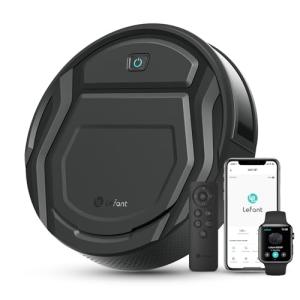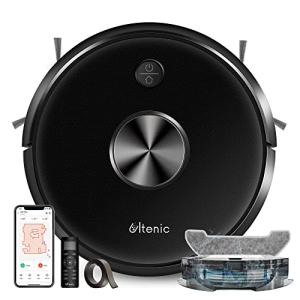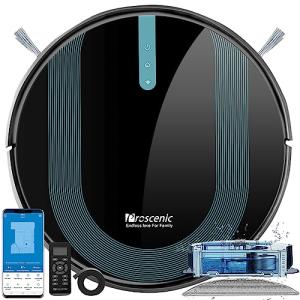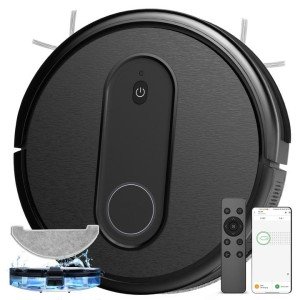In recent years, smart home technology has taken the market by storm, and one of the most beneficial innovations in this space is the smart robot vacuum mop. These intelligent devices not only clean your floors but also do so with an impressive level of efficiency and convenience. This post will explore the features, benefits, and various factors to consider when choosing a smart robot vacuum mop with strong suction and Wi-Fi capabilities.
What is a Smart Robot Vacuum Mop?
A smart robot vacuum mop is an autonomous cleaning device that combines vacuuming and mopping functionalities. Equipped with sensors, brushes, and suction power, these robots can navigate around the house while detecting different floor types, adjusting their cleaning modes accordingly. The integration of Wi-Fi allows users to control the robot via smartphones or other smart devices, enabling remote operation, scheduling, and even monitoring through mobile applications.
Benefits of Using a Smart Robot Vacuum Mop
- Convenience: Automated cleaning means less time spent on tedious chores.
- Efficiency: Strong suction power ensures thorough cleaning, tackling dirt, dust, and debris effectively.
- Versatility: Many models include both vacuuming and mopping capabilities, making them suitable for various floor types.
- User-Friendly: Wi-Fi-enabled features allow for easy scheduling and control via smartphone apps.
- Cost-Effectiveness: Reduces the need for separate vacuum and mop purchases, providing a complete solution at a lower overall cost.
Key Features to Consider
When choosing a smart robot vacuum mop, several features play a critical role in ensuring you select the best device for your home. The following table highlights the key features to look for, alongside their benefits:
| Feature | Description | Benefit |
|---|---|---|
| Strong Suction Power | Measures the device’s ability to pick up dirt and debris effectively. | Ensures a cleaner home with less effort. |
| Wi-Fi Connectivity | Connects to your home network for remote control via smartphone apps. | Allows for scheduling and monitoring from anywhere. |
| Smart Mapping | Utilizes technology to map the layout of your home for optimized cleaning. | Enhances efficiency and coverage. |
| Multi-Surface Cleaning | Adapts cleaning modes for carpets, tiles, hardwood, and more. | Protects flooring while providing flexibility. |
| Long Battery Life | Duration the vacuum can operate before needing a recharge. | Allows for cleaning larger areas in one go. |
| Sensor Technology | Obstacle detection and cliff sensors to prevent falls. | Protects furniture and the robot itself from damage. |
Top Smart Robot Vacuum Mops Currently on the Market
With a plethora of options available, it would be prudent to consider some of the best smart robot vacuum mops that offer strong suction and Wi-Fi connectivity. Below is a list of popular models, along with their standout features:
| Brand and Model | Suction Power | Mopping Capability | Battery Life | Price Range |
|---|---|---|---|---|
| iRobot Roomba i7+ | 1700 Pa | Yes | 75 mins | £900 - £1,200 |
| Roborock S7 | 2500 Pa | Yes | 180 mins | £600 - £750 |
| Ecovacs Deebot Ozmo T8 AIVI | 3000 Pa | Yes | 180 mins | £700 - £900 |
| Neato D8 Connected | 2000 Pa | Yes | 90 mins | £600 - £800 |
| Shark IQ Robot Vacuum | 1000 Pa | Yes | 90 mins | £400 - £600 |
How to Use a Smart Robot Vacuum Mop Effectively
- Initial Setup: Set up the device according to the manufacturer's instructions, ensuring it is connected to Wi-Fi.
- Mapping Your Home: Allow the robot to create a map of your home. This will enhance its cleaning efficiency in future sessions.
- Schedule Cleanings: Use the smartphone app to set regular cleaning schedules, allowing the robot to keep your space clean on autopilot.
- Regular Maintenance: Clean brushes, filters, and sensors regularly, and replace bags or containers when necessary to maintain peak performance.
- Monitor Performance: Use the app to track cleaning history, identify trouble spots, and adjust settings as needed.
FAQ Section
1. How does a robot vacuum mop determine which areas to clean?
Modern models utilize smart mapping technology to create layouts of your home. They adeptly navigate and remember spaces to clean them efficiently while avoiding obstacles.
2. Can I control my robot vacuum mop remotely?
Yes! With Wi-Fi connectivity, you can control and schedule cleanings through a dedicated mobile app, allowing you to operate the device wherever you are.
3. How often should I clean my robot vacuum mop?
It's advisable to perform regular maintenance, such as emptying dustbins and cleaning filters, every few uses, and a more thorough cleaning (brush and sensor) every month.
4. Are smart robot vacuums suitable for all floor types?
Most smart robot vacuum mops are designed to work on various surfaces, including hardwood, tile, and carpets. However, check the specifications of the model to ensure compatibility.
5. Is a robot vacuum mop worth the investment?
For many, the convenience and efficiency that these devices offer make them a worthwhile investment. They save time and labor compared to traditional cleaning methods.
Smart robot vacuum mops with strong suction and Wi-Fi capabilities represent an exciting convergence of convenience and technology in home cleaning. By merging vacuuming and mopping functionalities, they cater to a modern lifestyle where time-saving and efficiency are paramount. When choosing a robot vacuum mop, considering suction power, battery life, and smart features will help guide your decision.
Whether you're a tech enthusiast or just looking for a way to simplify your cleaning routine, investing in one of these smart gadgets can elevate your home maintenance experience. After all, in a fast-paced world, it’s refreshing to have a little extra help.







